
This parent guide supports parents in helping their child at home with the 7th grade Science content.
- Subject:
- Science
- Material Type:
- Reference Material
- Vocabulary
- Author:
- Kelly Rawlston
- Letoria Lewis
- Date Added:
- 10/11/2022

This parent guide supports parents in helping their child at home with the 7th grade Science content.

This resource accompanies our Rethink 7th Grade Science course. It includes ideas for use, ways to support exceptional children, ways to extend learning, digital resources and tools, tips for supporting English Language Learners and students with visual and hearing impairments. There are also ideas for offline learning.
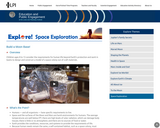
In this activity, learners consider the requirements for human life beyond Earth's protection: air to breathe, plentiful food, shielding from ultraviolet light, power, etc. They then work in teams to design and construct a model of a space colony out of craft materials that would allow humans to survive the harsh environments of the Moon or Mars. Teams present their modules and colonies to one another and create a display for the library. This activity is part of Explore! To the Moon and Beyond! - developed specifically for use in libraries.
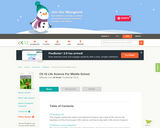
CK-12's Life Science delivers a full course of study in the life sciences for the middle school student, relating an understanding of the history, disciplines, tools, and modern techniques of science to the exploration of cell biology, genetics, evolution, prokaryotes, protists, fungi, plants, the animal kingdom, the human body, and ecology. This digital textbook was reviewed for its alignment with California content standards.
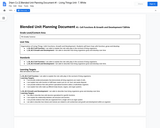
Organization of Living Things: Cells Functions, Growth and Development- Students will learn how cells function, grow and develop.
L.OL.M.2 Cell Function: I am able to explain the role cells play in the survival of living organisms.
L.OL.M.3 Growth and Development: I am able to describe how living organisms grow and develop over time
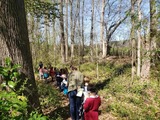
The North Carolina Museum of Natural Science created this resource as part of an online workshop series, but you are welcome to use or modify it for your classroom. It includes a video and written directions for creating nature journals and tips for incorporating them into your classroom. For information on taking any the Nature Neighborhood online workshops for CEUs or EE credit, visit: https://naturalsciences.org/learn/educators/online-workshops.

Students will learn how climate change poses risks to human health. Students will realize we need to safeguard our communities by protecting people’s health and quality of life from climate change impacts. Students will apply what they have learned and discuss in groups how the U.S. could apply their research and support toward third world countries. The standards tagged are for the entire series of lessons as a whole. This lesson was developed by Marty Ervin as part of their completion of the North Carolina Global Educator Digital Badge program. This lesson plan has been vetted at the local and state level for standards alignment, Global Education focus, and content accuracy.

Students will learn how climate change poses risks to human health. Students will realize we need to safeguard our communities by protecting people’s health and quality of life from climate change impacts. The standards tagged are for the entire series of lessons as a whole. This lesson was developed by Marty Ervin as part of their completion of the North Carolina Global Educator Digital Badge program. This lesson plan has been vetted at the local and state level for standards alignment, Global Education focus, and content accuracy.

Students will understand how climate change can affect human health and how some populations will be especially affected. Students will investigate different countries of the world and how these countries contribute to air pollution and global warming. The standards tagged are for the entire series of lessons as a whole. This lesson was developed by Marty Ervin as part of their completion of the North Carolina Global Educator Digital Badge program. This lesson plan has been vetted at the local and state level for standards alignment, Global Education focus, and content accuracy.

Students will consider multiple perspectives of other cultures and countries. They will realize that global warming may not be a priority in countries where the basic population is struggling to maintain an existence. Students will understand how difficult it is to insure all countries of the world reduce their contribution to global warming and follow the lead of the United States. Students will create a proposed action plan for how they will act and educate others on the impact on human health of global warming. Students will apply their knowledge and discoveries from this unit to propose how they teach others about the importance of reducing their own carbon footprint. The standards tagged are for the entire series of lessons as a whole. This lesson was developed by Marty Ervin as part of their completion of the North Carolina Global Educator Digital Badge program. This lesson plan has been vetted at the local and state level for standards alignment, Global Education focus, and content accuracy.
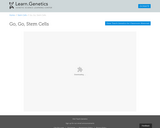
Students learn how stem cells work in different body tissues.

Daniel Kraft offers a fast-paced look at the next few years of innovations in medicine, powered by new tools, tests and apps that bring diagnostic information right to the patient's bedside. Assessment questions and links to additional resources are included.
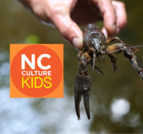
In this short video, students join Emily and Dr. Bronwyn Williams from the North Carolina Museum of Natural Sciences as they head to three different North Carolina locations to explore the world of crayfish!

Within the life science strand of 7th grade science, students focus on the processes, structures, and functions of living organisms that enable them to survive, reproduce, and carry out the basic functions of life. Often, other living organisms’ need to perform life functions interacts positively/ interferes negatively with humans’ life functions. In this task, students will research protists’ interactions with humans for an online news website. Students will compose non-fiction essays that relate the positive aspects of protists. The real-world and interdisciplinary aspects of this lesson allow students to build meaningful connections and promote the development of 21st Century Skills. This lesson was developed by NCDPI as part of the Academically and/or Intellectually Gifted Instructional Resources Project. This lesson plan has been vetted at the state level for standards alignment, AIG focus, and content accuracy.

This course was created by the Rethink Education Content Development Team. This course is aligned to the NC Standards for 7th Grade Science.

This course was created by the Rethink Education Content Development Team. This course is aligned to the NC Standards for 7th Grade Science.

This course was created by the Rethink Education Content Development Team. This course is aligned to the NC Standards for 7th Grade Science.

Within the life science strand of 7th grade science, students focus on the processes, structures, and functions of living organisms that enable them to survive, reproduce, and carry out the basic functions of life. In this lesson, students will work in groups to create an annotated diagram explaining how the major systems (except reproduction) are involved in the process of running. The real-world and collaborative aspects of this lesson allow students to build meaningful connections and promote the development of 21st Century Skills. This lesson was developed by NCDPI as part of the Academically and/or Intellectually Gifted Instructional Resources Project. This lesson plan has been vetted at the state level for standards alignment, AIG focus, and content accuracy.

This is additional curriculum for the Untamed Science video series created in a partnership between the North Carolina Zoo and videographer Rob Nelson. You are meant to watch the original video about Polar Bears, and then open the PDF resource below to learn about their conservation and become a Species Survival Coordinator for these vulnerable bears!

7th Grade Integrated Science textbook for the 2019-2020 school year. This textbook was developed to align to the Utah Science Core Curriculum. (Updated: May 29, 2019)